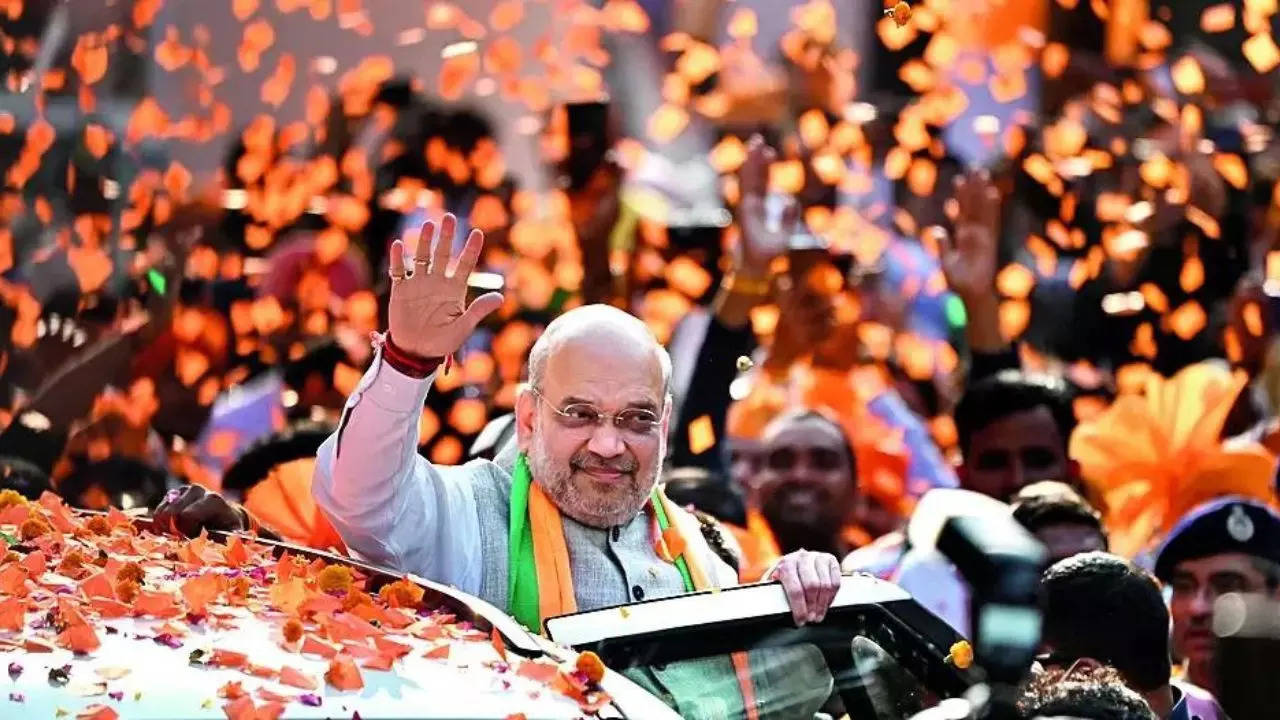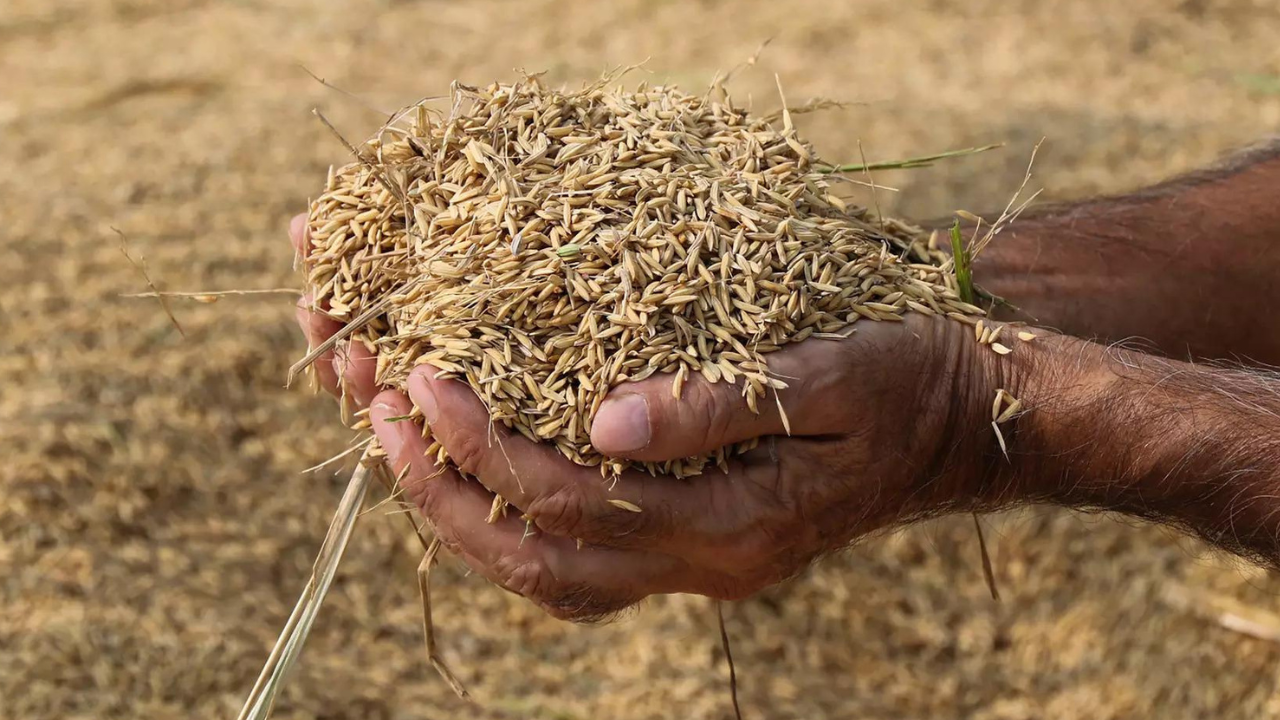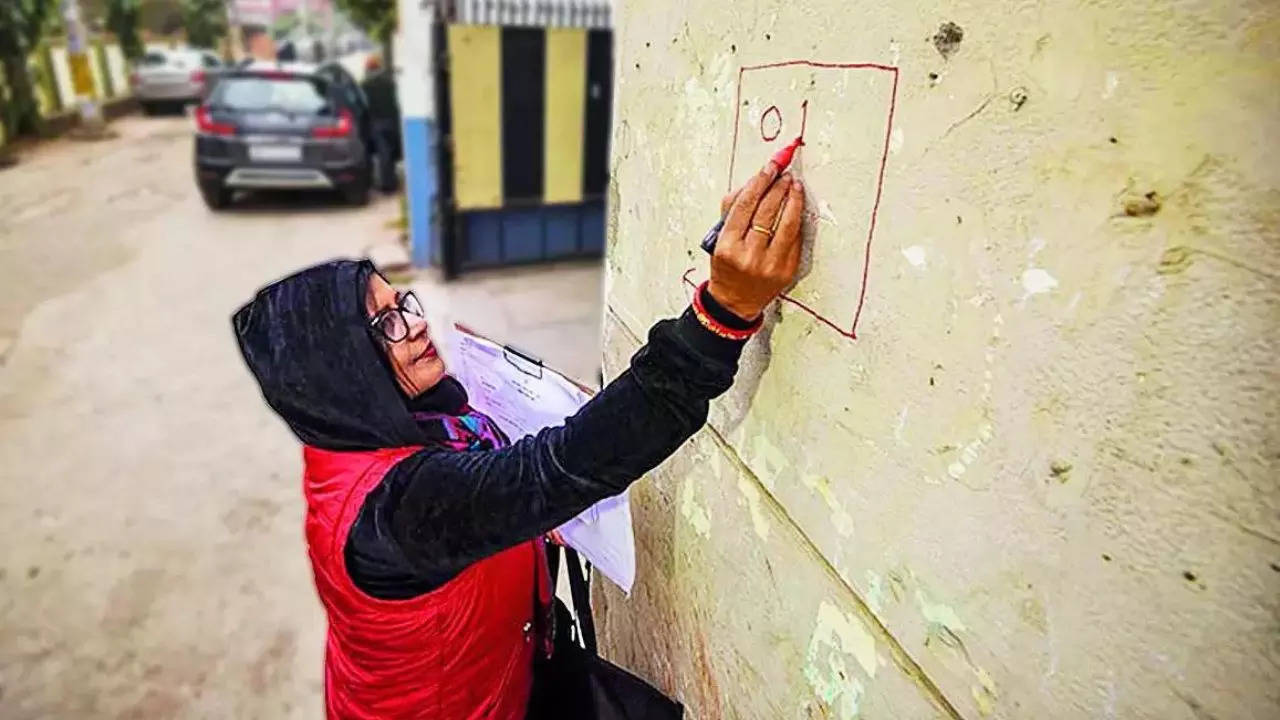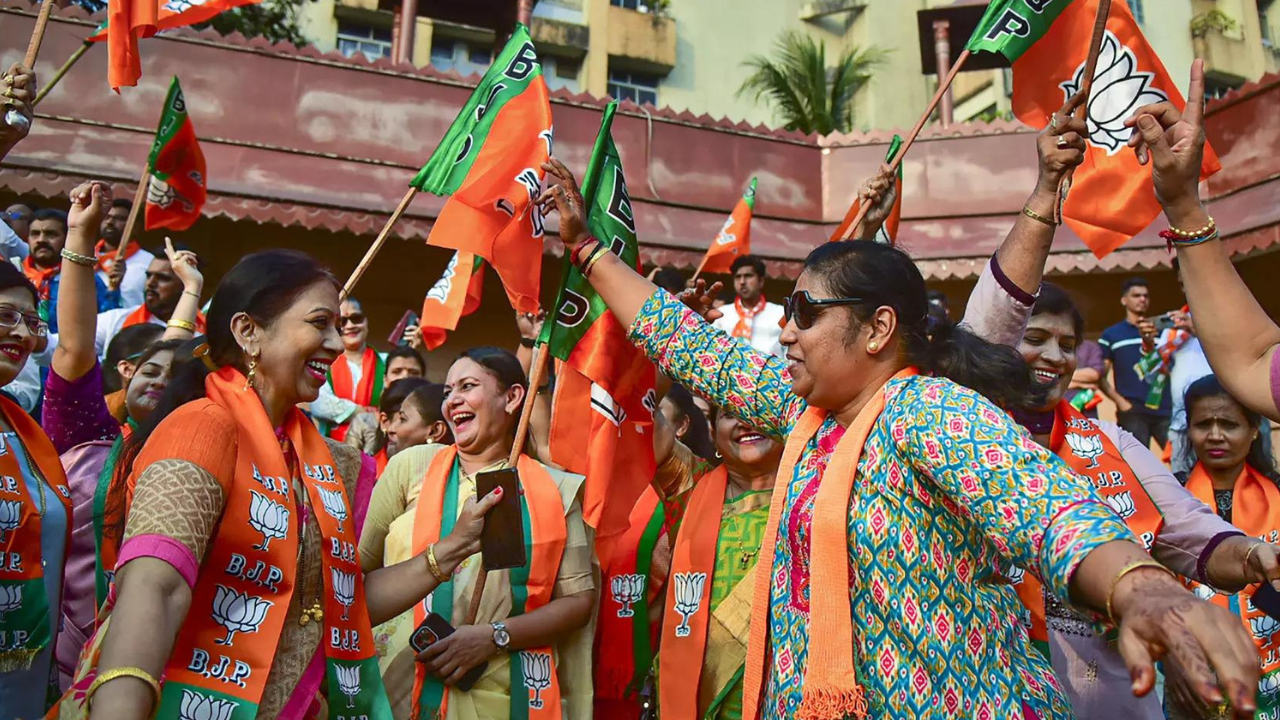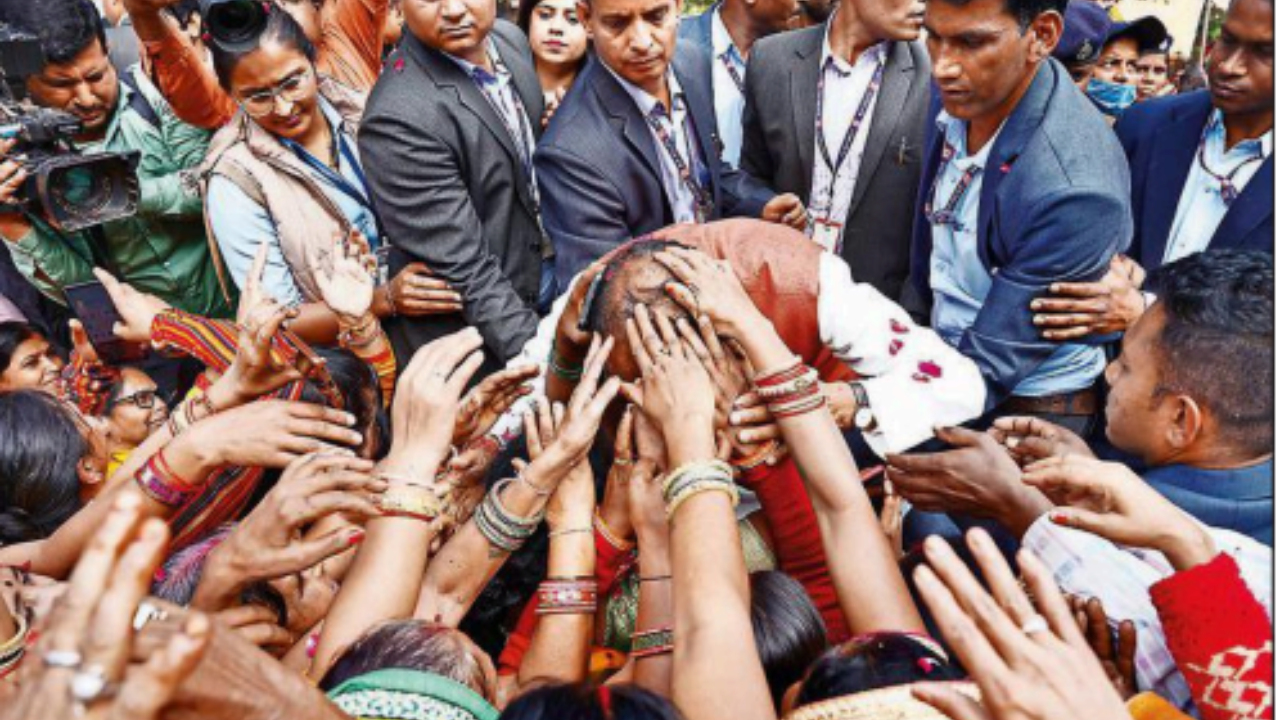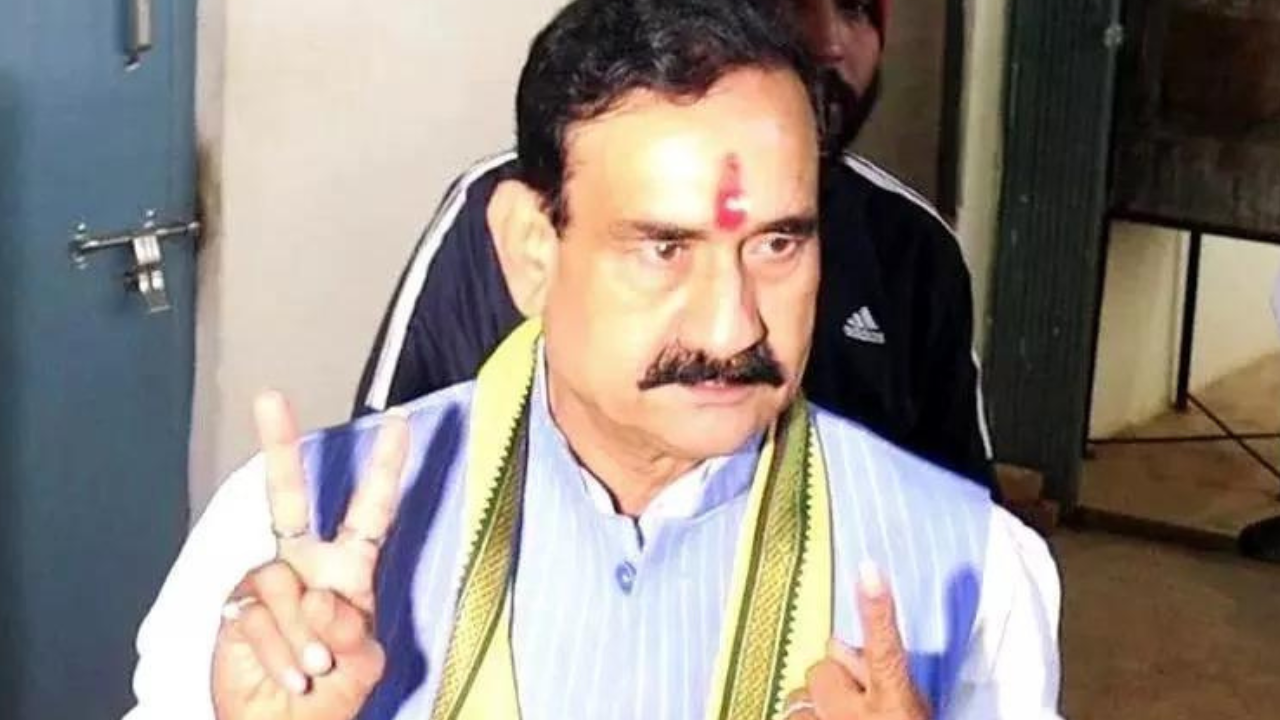It was ‘Modi ki guarantee’ and not Congress’s welfare promises that resonated with the electorate as BJP returned to office in
Rajasthanwinning 115 of the state’s 200 seats.
The party emerged triumphant, weaving a compelling narrative intertwining diverse elements – youth concerns, crime, corruption – that were skillfully communicated to voters. While BJP capitalised on its sharp messaging, Congress faced challenges that proved insurmountable.
The results on Sunday solidified Modi’s position as the party’s winning mascot. Congress’s attempt to break the anti-incumbency trend faltered against Modi’s guarantees and BJP’s relentless focus on Congress’s failures.
Modi, unity, resonance: Modi stood as the pivotal figure for BJP, dispelling any concern about ‘sidelining’ party stalwarts. The PM’s connect trumped the Congress manifesto that was loaded with welfare schemes.
The acknowledgment of Modi’s leadership by ‘sidelined’ former CM Vasundhara Raje also cemented that there was no dispute on who the face of the campaign was.
Meanwhile, Congress faced internal strife, notably the unresolved differences between chief minister Ashok Gehlot and his former deputy Sachin Pilot, despite attempts to project unity. The failure to address this internal discord led to disgruntlement among the Gujjar community and disillusioned a significant section of the youth demography. In a post on X, Raje said, “This victory is of the victory of the PM Modi’s mantra of ‘sabka saath, sabka vikas, sabka vishwas, and sabka prayaas’… It is a victory that will ensure that Prime Minister Narendra Modi is re-elected in 2024…”
Anti-incumbency factor: Congress faced an uphill battle against the longstanding anti-incumbency trend in Rajasthan, with voters traditionally ousting the ruling party every five years. The grand old party also struggled to counter perceptions of bureaucratic influence hindering ministerial responsiveness to public grievances.
The ‘Chiranjeevi Bhav’ health insurance scheme and a Rs 10,000 dole to women heads of families failed to resonate with voters. Congress’s flagship schemes could not stand against Modi’s ‘guarantees’ and BJP’s narrative.
Messaging and strategy: BJP effectively communicated the mantra of ‘sabka saath, sabka vishwas, and sabka prayaas’, emphasising Modi’s inclusive governance approach. The party’s focus on issues like law and order, corruption, and the failures of the Congress government during campaigning struck a chord with voters. In sharp contrast, Congress leadership admitted its failure in effectively communicating its plans, schemes and innovations to the masses.
Beheading and crime: The beheading of Kanhaiya Lal by two Muslim radicals became a game-changer for BJP. Modi, Amit Shah, Yogi Adityanath, and Himanta Biswa Sarma strategically emphasised such incidents. Meanwhile, Congress grappled with rising crime rate. High-profile incidents, such as the death of a woman during a purse-snatching bid and a fatal altercation over parking space, tarnished the party’s image. BJP hammered away at Congress’s inability to maintain law and order and the allegations swayed voters. CM Gehlot said on X, “…Modi and Amit Shah incited people in the name of religion… I had expected the people of the state would take revenge on BJP leaders, but it did not happen…”
Rajasthan Elections: Congress aims to break historical pattern as BJP seeks a comeback
Paper leaks and youth: The question paper leaks affecting 14 recruitment exams attempted by more than 70 lakh youngsters became a focal point of the saffron party’s campaign. BJP leveraged the issue to showcase Congress’s ‘incompetence and mishandling’. The party’s narrative of a ‘state-sponsored’ paper mafia resonated, and fielding Upen Yadav, the poster boy of the paper leak protests, as a candidate also reaffirmed BJP’s alignment with youth concerns.
Corruption vs vikaas: The discovery of cash and gold in the Rajasthan secretariat exposed corruption within the Gehlot government. Graft allegations against top officials fuelled discontent, making corruption a central issue in the elections. While BJP made the most out of the issue and kept hammering its ‘vikaas’ agenda at rallies, Congress overlooked resentment against its legislators embroiled in graft cases and their alleged connections to mafias
The party’s failure to address these complaints eroded its standing among voters. In a post on scial media, BJP’s Gajendra Singh Shekhawats aid, “The magician’s ‘magic’ has ended and Rajasthan has come out from under his spell. People voted for the honour of women and for the welfare of the poor… They have voted to throw the corrupt Congress out.”







